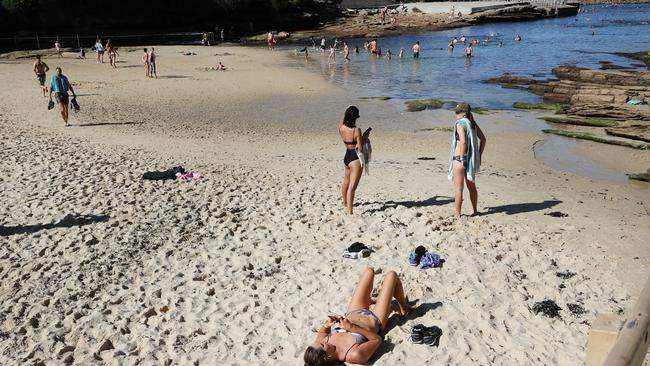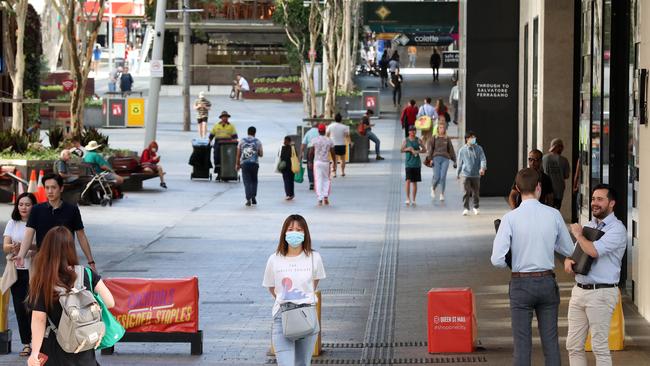Alarming new research on how COVID-19 spreads
We’ve been told to stand 1.5 metres from others to stop the spread of COVID-19. But alarming new research has found droplets of the deadly virus can travel far further.
- Aussies denied most promising COVID-19 treatment
- New Aussie COVID-19 trial to use head lice treatment
The rule that Australians keep 1.5 metres distant from each other to stop the spread of COVID-19 is under question with new research showing droplets of virus can travel up to 8 metres.
And researchers are warning medical staff are being incorrectly told surgical masks are enough to protect them from infection when the research now suggests a P2 respirator mask is needed.
Researchers from the University NSW and the Massachusetts Institute of Technology (MIT) examined multiple studies on the distance travelled by respiratory droplets to reach the conclusions.
They found “the available scientific evidence does not support the assumption that contamination from symptomatic patients would only occur within a 1-2m safe distance”.
In 10 studies reviewed by the authors on the distance travelled by droplets from various types of exhalations, eight found that they travelled more than 2m and up to 8m from the person emitting them.

UNSW’s Professor Raina MacIntyre, head of the Biosecurity Program at the Kirby Institute, says that the study has implications for guidelines on social distancing.
“Up until now it has been assumed that the large droplets expelled from exhalations fall to the ground quickly,” she said.
“The guidance we are given for social distancing of 1.5 metres is based on the belief that 1-2 metres is a safe distance to avoid being sprayed by large droplets and that these droplets would be the main emissions containing the virus and able to cause disease,” she said.
“But the body of evidence shows that droplets can be expelled further than 2m. Smaller particles that can’t be seen or felt may remain suspended in a “cloud” and then carried for hours in ambient air, so they can end up travelling much longer distances.”
In the US health experts have been calling on people to wear masks to protect themselves from the virus while Australia’s chief medical officers have advised against this as they try to preserve available personal protective equipment like masks for health workers.
UNSW Engineering’s Professor Con Doolan says the new findings also have implications for the type of masks health professionals are told to wear to protect themselves from the virus.
Thousands of health workers around the world and in Australia have become infected with the virus.
Currently Australian doctors are told flimsy surgical masks are adequate protection for most situations.
“We really don’t know how the droplets interact with surgical masks and until we understand that, then we should be using respirator masks,” Professor Doolan said.

Professor MacIntyre said if the evidence suggests droplets can travel further than 2m, then “the air inside a standard hospital room could be contaminated beyond that distance”.
“Given the high case fatality rate and documented deaths of health workers from COVID-19, the ‘precautionary principle’ and use of a respirator is warranted,” she said.
Professor Lydia Bourouiba, from MIT said there was evidence virus droplets can hang in the air and travel in a gas turbulent cloud making it hard to distinguish between droplet versus airborne transmission.
“This means the virus can have an extended range of contamination in the air compared to the short-range, surface-only contamination assumed from current definitions of the droplet route of transmission,” she said.
“Taken together with evidence of possible persistence of infectiousness of the virus for a few hours in laboratory conditions, the study calls for greater precautions with clear implications for protection of health care workers.”
